ubercab
description: the original name for Uber, an American ride-hailing company
19 results
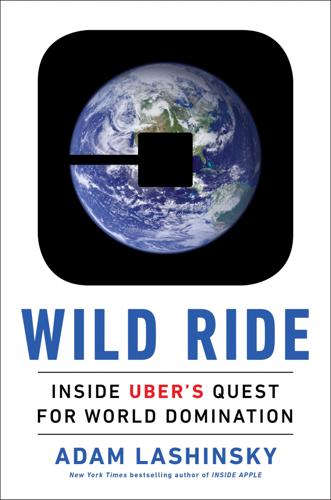
Wild Ride: Inside Uber's Quest for World Domination
by
Adam Lashinsky
Published 31 Mar 2017
Ram Shriram, who’d made money with Camp on StumbleUpon, felt UberCab didn’t have the right attributes for a technology company. “I told them, ‘I don’t invest in capital-intensive businesses, and I don’t want to end up with fifteen Lincoln Town Cars in my driveway.’” Numerous investors saw a red flag in Camp and Kalanick’s reluctance to join UberCab full time. And Ryan Graves, three months into his Silicon Valley entrepreneurial career, wasn’t a satisfactory CEO. One investor who saw UberCab’s potential was Rob Hayes of First Round Capital. Hayes had been following Camp on Twitter and noticed his periodic references to “UberCab,” though Hayes, a decade older and not a member of the same social scene, had no idea what it was.
…
In 2010, Camp was ramping up one of his many ideas, a smartphone app called UberCab that allowed a user to summon a limousine in San Francisco. Kalanick was putting in time with UberCab just as he was with Formspring, which at the time showed far more impressive user growth. In hindsight, the Uber-versus-Formspring decision seems obvious. It certainly was to Camp. “I was like, ‘Dude, Formspring?’ It had growth but how was it going to make money?” reflects Camp. “I told him there’s going to be significant revenue at Uber.” Kalanick says it wasn’t so much UberCab’s potential revenue that made him take the plunge. Instead, he describes the challenge in language that evokes a jigsaw puzzle, a particularly tough one that might come together in a beautiful picture.
…
On June 15, 2010, when the new service had been running for just a few weeks, Hayes sent Camp an e-mail titled “UberCab.” The e-mail read, in its entirety: “I’ll bite :-) Can I learn more?” Camp quickly put Hayes together with Graves, who pitched him on the investment. “I tried the product once, and it was a good experience,” says Hayes. “It made sense to me as a San Franciscan who had totally given up on taxis that this was going to work here and would likely work in other places.” Other VCs pooh-poohed UberCab because of the limited potential for a limo service. Hayes says he was enthralled not by limos but by how convenient UberCab was to use. “I knew that using the existing black-car market as a proxy for how big this could get was wrong.

Super Pumped: The Battle for Uber
by
Mike Isaac
Published 2 Sep 2019
note_id=476991565402. 58 “Uber CEO ‘Super Pumped’ ”: Michael Arrington, “Uber CEO ‘Super Pumped’ about Being Replaced by Founder,” TechCrunch, https://techcrunch.com/2010/12/22/uber-ceo-super-pumped-about-being-replaced-by-founder/. 59 posed for an Instagram snapshot: Uber HQ (@sweenzor), Instagram Photo, September 18, 2013, https://www.instagram.com/p/eatIa-juEa/?taken-by=sweenzor. 59 hailed UberCab’s model: Leena Rao, “UberCab Takes the Hassle Out of Booking a Car Service,” TechCrunch, https://techcrunch.com/2010/07/05/ubercab-takes-the-hassle-out-of-booking-a-car-service/. 59 one TechCrunch article by Arrington said: Michael Arrington, “What If UberCab Pulls an Airbnb? Taxi Business Could (Finally) Get Some Disruption,” TechCrunch, https://techcrunch.com/2010/08/31/what-if-ubercab-pulls-an-airbnb-taxi-business-could-finally-get-some-disruption/. Chapter 7: THE TALLEST MAN IN VENTURE CAPITAL 65 “It’s magic”: GigaOm, “Bill Gurley, Benchmark Capital (full version),” YouTube video, 32:48, December 14, 2012, https://www.youtube.com/watch?
…
When a user ordered an UberCab, she could watch the car’s journey, pixel by pixel, across the map on the screen of their iPhone. San Francisco’s aging taxicabs were grimy, their seats sticky and torn. UberCab’s private black cars would show up spotless, with slick black leather interiors and comfortable air conditioning, replete with wintergreen breath mints and chilled bottles of Aquafina. One of the most important parts of the UberCab experience was paying for the ride. Kalanick was insistent that payment was something people shouldn’t even have to think about. With UberCab, the ride would simply be charged to a credit card stored on your account.
…
“People are seriously pumped about this change,” Arrington wrote. The first version of UberCab was not an app. Users logged in to a desktop computer browser, navigated to UberCab.com, requested a black car and, in theory, would receive a ride within ten minutes or less for only one and a half times the price of a yellow cab. It was more expensive, yes, but the idea was people would pay more for the reliability and convenience of on-demand service. Soon enough, the company farmed out development, and contract programmers hacked together a rudimentary version of an UberCab iPhone app. It was buggy and slow, but it worked. Camp, a sucker for luxury, focused on branding.
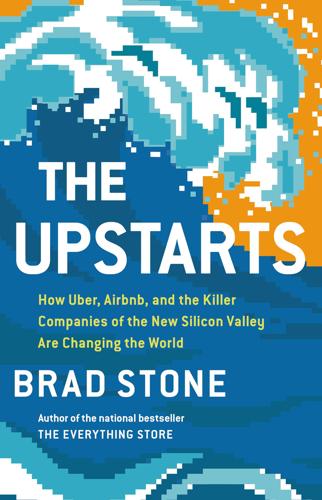
The Upstarts: How Uber, Airbnb, and the Killer Companies of the New Silicon Valley Are Changing the World
by
Brad Stone
Published 30 Jan 2017
McCloskey recalls that Camp “wanted it to be one word and a description of excellence” and that his musings on the word, its sound and meaning, were incessant. “What an uber coffee that was,” he’d say randomly after drinking a cup. “It means great things! It means greatness!” Camp says he contemplated calling this new service ÜberCab or BestCab and finally settled on just UberCab, losing the umlaut. (He registered the domain name UberCab.com in August 2008.) McCloskey loved Camp’s endless examination of new ideas but wasn’t so sure she believed in this particular one. “Sure, cabs are terrible,” she said. “But you are only in the cab for eight minutes! Why does it matter?” But Camp was certain that he wanted such a service.
…
Graves was introduced to his first engineer at a bar. Camp had invited another classmate from graduate school, Conrad Whelan, to join UberCab after Whelan told him he was finally ready to leave Calgary. Now that there were two employees, they needed an office. Graves had met the founder of the online-travel startup Zozi over Twitter, and Zozi happened to have a small unused windowed conference room in its offices across the street from the iconic Transamerica Pyramid. So the UberCab staff set up shop there, on the second floor, sitting in chairs at a square desk that was wedged against the wall. The company hoped to launch the service to the public that summer.
…
Meanwhile, Graves, the CEO, and Kalanick, an adviser now spending about twenty hours a week on UberCab, cold-called and visited San Francisco town-car fleets and pitched the service to the owners. “It was old school dialing for dollars,” Kalanick would later say.6 “A third of the calls, you know, basically I got hung up on before I got to the core pitch. A third of the calls they heard for about a minute and a half and then I got hung up on. And a third were like, this is interesting.” In May, Mob.ly was acquired by Groupon and announced it would shut down its ongoing projects. It was almost disastrous for the fledgling UberCab. Graves had to beg Mob.ly to finish stable versions of the apps for riders and drivers.
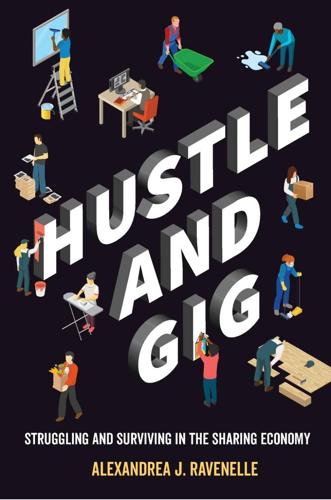
Hustle and Gig: Struggling and Surviving in the Sharing Economy
by
Alexandrea J. Ravenelle
Published 12 Mar 2019
So they came up with a simple idea—tap a button, get a ride.”75 True to its high-end roots, the first iteration—UberCab—was a black car service that allowed a user to call a car by pressing a button on a smartphone or sending a text. The price hovered around 1.5 times as much as a typical San Francisco cab.76 The service ran into regulatory issues almost from the start. After an October 2010 cease-and-desist letter from the San Francisco Metro Transit Authority and the Public Utilities Commission of California claiming they were operating an unlicensed taxi service, UberCab removed the word cab from its logo and started to operate under the brand name Uber.
…
June 17. https://motherboard.vice.com/en_us/article/pga4n9/anatomy-of-a-seven-hour-583-uber-ride. Kokalitcheva, Kia. 2016. “Uber’s Employment Fight Just Got More Complicated.” Fortune, March 4. Kolhatkar, Sheelah. 2016. “Juno Takes on Uber.” New Yorker, October 10. ———. 2017. “Welcoming Our New Robot Overlords.” New Yorker, October 23. Kolodny, Lora. 2010. “UberCab Ordered to Cease and Desist.” TechCrunch, October 24. Kortum, Samuel, and Josh Lerner. 2000. “Assessing the Impact of Venture Capital on Innovation.” Rand Journal of Economics 31:674–92. Kosoff, Maya. 2015. “2 Harvard Students Were Sick of Their Dirty Apartments, So They Built a Company That Will Do Your Chores for You.”
…
See also cashless payment systems; customer review sites; smartphones technology focus: apps, 6; contactless payment systems, 6; review systems, 6; smartphones, 6 TED talk, 30 temporary-agency model: sexual harassment and, 119–21; TaskRabbit as, 1, 55; worker expectations and, 121–24 temporary workers, 179–80 Temp Slave (Kelly), 180 1099/freelance workers, 94–96, 186, 189, 198fig. 14, 205 Teran, Dan, 190 term reinvention, 28–29 term usage: disruption, 30; sharing, 28–29; trust, 29–30 textile industry: cottage industry, 66; in New England, 66; strikes in, 67, 70, 224n12; textile mills, 66 Thumbtack, 64 Tien, Jon, 58 time rule solution, 202–3, 206 time with passenger calculations, 226n47 tips, 77 Title VII protections, 118 Tocqueville, Alexis de, 16, 31 Ton, Zeynep, 190 Tonnie, Ferdinand, 32 tool libraries, 26 Trader Joe’s, 190 Tradesy, 9 traditional employment, 184, 190 Traity, 29 travel time, 15 Treaty of Detroit, 177 Triangle Shirtwaist Factory Fire of 1911, 92, 93, 226–27n3, 227n8 TripAdvisor, 30 trust: Airbnb and, 30; decreasing rate of, 33; problems and, 46–47; trust-and-safety/support fees, 55–56, 79; trust ratings, 30; verifications and, 29–30, 208 TrustCloud, 29 The Tumbleweed Society (Pugh), 38 twenty-factor test, 197, 199–201box 1 Twitter, 30 Uber, 2; overview, 4, 7, 21, 22, 223n75; African-Americans as users of, 35; background on, 49–54; bathroom use, 88; business use of, 182, 228n14; communication issues, 63; complaints against passengers, 108–9; criminal activity and, 143–47; Driver Injury Protection insurance, 102; driver requirements, 167; employee monitoring, 204; as environmentally friendly, 226n47; financing programs, 3, 73, 226n36; general liability insurance, 110; growth of, 7; high capital-barrier, 43, 43tab. 1, 167; homeless workers and, 42; income level, 184–85; insurance requirements, 145; lawsuits against, 233n54; lawsuits by workers against, 38; legalization strategies of, 145; low skill-barrier, 43tab. 1, 160; 180 Days of Change campaign, 102; participant recruitment and methodology, 42–43; party-line rides, 105–6; payment rate changes, 74–78, 75tab. 2; pivots, 74–79; policies and algorithms of, 6; price-fixing conspiracy lawsuit, 71; promises of, 25, 233n54; recruitment, 73; rental cars, 5; research financed by, 38; response rates, 81, 160; safety issues, 101–4, 113; as sharing economy company, 26; start-up expenses, 145; as supplemental income, 39; tiered commission system, 76; UberPeople.net, 72–73; underpayment by, 76; usage by race, 194; value of, 77; worker-client sexual interactions, 132–33; work stigma and, 161. See also drivers; Uber workers UberBLACK, 27, 78, 107 UberCab, 49–50 UberPeople, 72–73, 225n34 uberPOOL, 27, 105–6 UberRUSH, 127–28 UberTaxi service, 77 Uber workers: Baran, 2–3, 6; Bryan, 78–79; as independent contractors, 36 uberX, 27, 75, 75tab. 2, 77, 78, 107 underemployment, 42, 62, 175 underground economy, 186 unemployment: discrimination against long-term unemployed, 62; long-term unemployed, 11; sharing economy and, 61 unemployment benefits: access to, 187; independent contractor status and, 94; unionization and, 177 unemployment insurance, 120, 191 unemployment rate, 10, 175, 176 unexotic underclass, 231n4 unicorns (startups), 2 unionization: overview, 6, 23; deregulation and, 178; early attempts at, 64–65; gig economy workers and, 71–72, 94; Triangle Shirtwaist Factory Fire of 1911 and, 227n8; Wagner Act of 1935, 70; worker benefits and, 71, 177–78 United Mine Workers Union, 69 unpaid work: overview, 2, 6; on-call time, 83; start-up time, 19; travel time, 15 unused assets, 26.

Machine, Platform, Crowd: Harnessing Our Digital Future
by
Andrew McAfee
and
Erik Brynjolfsson
Published 26 Jun 2017
Smart, “Millennials and Car Ownership: Less Money, Fewer Cars,” Transport Policy 53 (January 2017): 20–29, http://www.sciencedirect.com/science/article/pii/S0967070X16305571. Chapter 9 DO PRODUCTS HAVE A PRAYER? 200 “So,” the company’s website explains: Uber, “[Our Story],” accessed February 5, 2017, https://www.uber.com/our-story. 200 initially called UberCab: Leena Rao, “UberCab Takes the Hassle Out of Booking a Car Service,” TechCrunch, July 5, 2010, https://techcrunch.com/2010/07/05/ubercab-takes-the-hassle-out-of-booking-a-car-service. 200 “supercrazy freakin’ small”: Fast Company, “Travis Kalanick, the Fall and Spectacular Rise of the Man behind Uber,” South China Morning Post, September 25, 2015, http://www.scmp.com/magazines/post-magazine/article/1860723/travis-kalanick-fall-and-spectacular-rise-man-behind-uber. 200 By late 2010, Kalanick had begun: Ibid. 200 Eighteen months later they launched UberX: Alexia Tsotsis, “Uber Opens Up Platform to Non-limo Vehicles with ‘Uber X,’ Service Will Be 35% Less Expensive,” TechCrunch, July 1, 2012, https://techcrunch.com/2012/07/01/uber-opens-up-platform-to-non-limo-vehicles-with-uber-x-service-will-be-35-less-expensive. 201 UberPool, launched in August of 2014: Alex, “Announcing UberPool,” Uber Newsroom (blog), August 5, 2014, https://newsroom.uber.com/announcing-uberpool. 201 $20 billion in annual gross bookings: James Temperton, “Uber’s 2016 Losses to Top $3bn According to Leaked Financials,” Wired, December 20, 2016, http://www.wired.co.uk/article/uber-finances-losses-driverless-cars. 201 Uber was valued at $68 billion: Andrew Ross Sorkin, “Why Uber Keeps Raising Billions,” New York Times, June 20, 2016, https://www.nytimes.com/2016/06/21/business/dealbook/why-uber-keeps-raising-billions.html. 201 Traditional taxis provided 8.4 million trips: UCLA Labor Center, “Ridesharing or Ridestealing?
…
The wise learn many things from their enemies. — Aristophanes, 414 BCE UBER’S URBAN TRANSPORTATION PLATFORM WAS BORN IN Paris in 2008 when Travis Kalanick and Garrett Camp had difficulty hailing a cab. “So,” the company’s website explains, “they came up with a simple idea—tap a button, get a ride.” Their original vision (initially called UberCab) focused only on limos. Early growth was steady but slow. When Camp first suggested that Kalanick should run Uber full-time, Kalanick said no because he felt the opportunity was “supercrazy freakin’ small.” Incumbents Get Taken for a Ride By late 2010, Kalanick had begun to see a bigger opportunity.
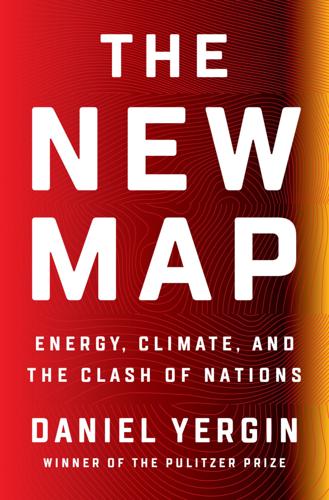
The New Map: Energy, Climate, and the Clash of Nations
by
Daniel Yergin
Published 14 Sep 2020
On August 8, 2008, he registered a website, www.ubercab.com. Camp hardly imagined transforming transportation and challenging an entire business and way of life based upon people owning a car. The initial aim was far more modest. The first pitch book described “UberCab” as a “Next-Generation Car Service” aimed at improving on cabs. “Digital Hail can now make street hail unnecessary.” Instead, “Mobile app will match client & driver.” It would be “members only—respectable clientele” matched up with drivers operating Mercedes and other high-end cars owned by UberCab. The “use cases” ranged from “trips to/from restaurants, bars & shows” to “elderly transport.”
…
., 2020); Rebecca Yergin, “NHTSA Continues to Ramp Up Exploration of Automated Driving Technologies,” Covington & Burling, Blog, April 2020. 13. Marco della Cava, “Garage Startup Uses Deep Learning to Teach Cars to Drive,” USA Today, August 30, 2016. Chapter 39: Hailing the Future 1. Interview with Garrett Camp; “UberCab” pitch deck, December 2008. 2. Adam Lashinsky, Wild Ride: Inside Uber’s Quest for World Domination (New York: Portfolio/Penguin, 2017), pp. 80–81, 91. 3. Megan Rose Dickey, “Lyft’s Rides Are So Social,” Business Insider, March 16, 2014; Travis Kalanick, Uber Policy White Paper, “Principled Innovation: Addressing the Regulatory Ambiguity,” April 12, 2013 (“compete”). 4.

No Filter: The Inside Story of Instagram
by
Sarah Frier
Published 13 Apr 2020
* * * Late one night, lit by the glow of his laptop in rickety Dogpatch Labs, Systrom was coding in a corner, trying not to be distracted by the fact that there was an entrepreneur pitch event going on. A man named Travis Kalanick was in front of an audience of mostly men explaining his company, UberCab, which made a tool that was supposed to help people summon luxury cars with their phones. It would officially launch in San Francisco the next year. One of the event’s guests was Lowercase Capital’s Chris Sacca, an early investor in Twitter, who was already putting money in UberCab. Sacca considered himself a good judge of character, and had made a call to invest in Kalanick after inviting him for hours of hot-tubbing at his Lake Tahoe home.
…
., 113 #trashcangate, 181–82, 204 travel, IG’s influence on, 169, 241, 242 Trigger, Kaitlyn, 79 trolls, internet, 41, 219, 251 Trump, Donald, 207, 208, 210, 211, 224, 258 FB leveraged by, 212–13 Trump, Ivanka, 70 Trump International Hotel, 70 Tumblr, 19, 103, 170 Tuna (dog), 141–42, 153 Tuna Melts My Heart (Dasher), 142 24 Hour Photo, 117 Twitter, xviii, xxi, 9, 17, 19, 31, 39, 130, 137, 151, 160, 170, 192, 225, 232, 239, 248 Academy Awards and, 151, 204 in attempt to buy IG, 25, 46, 48–49, 55–56, 86, 109 Benchmark Capital investment in, 36 chronological order of posts on, 19, 117 content policing and, 43 Dorsey at, 14, 25–26, 46–47 early investors in, 23 fake news on, 225 as follower-based network, 20 founders’ discord at, 14 free speech ethos at, 37, 156–57 growth rate of, 216 IG blocked from access to, 84, 99 IG photo sharing to, 37 IPO of, 98, 148, 149, 150–51 Niche acquired by, 165 Obama’s account on, 126 140–character limit of, 110, 128 Periscope acquired by, 64 retweet button of, 20, 44, 152, 157, 234 status updates at, 15 #tweetups and, 34 as unwilling to edit content, 220 user anonymity on, 41 verification on, 132 Vine acquired by, 64, 109, 157 Williams at, 14, 46 Zuckerberg’s attempted purchase of, 57 Twttr, 7 Tycho (Scott Hansen), 34 Tyga, 238 U2, 126 Uber, 36, 45, 222 UberCab, 23 Underwood, Teddy, 120–21 “unicorns,” 61 Van Damme, Tim, 51–54, 73 Vanity Fair, 158, 192 #vanlife, 229 venture capitalists, 2–3, 11, 15, 24, 36–37, 55, 56, 109, 116, 191 Vergara, Sofia, 236 Verge, 216 verification, 231–32, 279 as status symbol, 132–33 Verrilli, Jessica, 46 VidCon, 219 Viddy, 109 Vine, 64, 109–10, 111–12, 122, 124, 157, 165, 171, 265 violence, violent content, 40, 41–42, 97, 223, 249, 261 virality: of fake news, 225 on FB, 162, 209, 211, 215, 251, 260 re-sharing and, 20, 43–44, 140, 152, 210 risky behavior and, 240, 243–45 sharing and, 140, 152 social networking and, 44 on Twitter, 151, 239 Vogue, 118, 195, 231 IG-related cover of, 156, 157 VPN (virtual private network), 122 Wall Street, 74, 102, 150, 151, 164, 266, 267 Wall Street Journal, 102, 118, 122 Warner Bros.

Matchmakers: The New Economics of Multisided Platforms
by
David S. Evans
and
Richard Schmalensee
Published 23 May 2016
It has become a leading operating system for workhouse computers and powers the core of the Android operating system for smartphones. The Android operating system for mobile phones relies on the core portion of Linux known as the kernel. 24. Leena Rao, “Ubercab takes the hassle out of booking a car service,” TechCrunch, July 5, 2010, http://techcrunch.com/2010/07/05/ubercab-takes-the-hassle-out-of-booking-a-car-service/. 25. Uber Newsroom, “Our Commitment to Safety,” December 17, 2014, http://newsroom.uber.com/2014/12/our-commitment-to-safety/; Uber, “60 Countries: Available Locally, Expanding Globally,” https://www.uber.com/cities. 26.
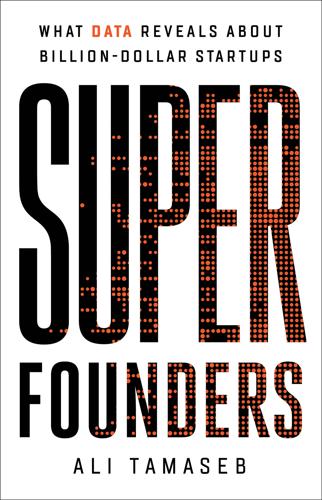
Super Founders: What Data Reveals About Billion-Dollar Startups
by
Ali Tamaseb
Published 14 Sep 2021
He could bring down the cost of a private black-car or limousine service if he could pay per trip, on demand, rather than reserving the car in advance and paying per hour or half-day. The driver would still get paid for a day’s work, just with multiple passengers. He quickly sketched out the concept and called it UberCab, which used the customer’s GPS location to send a text message to the closest driver. Camp had just turned thirty. He had a master’s degree in software engineering and a couple of willing friends, Oscar Salazar and Conrad Whelan, who agreed to build a prototype for his idea. When it seemed like it might work, he invited Travis Kalanick to join as an investor and “mega advisor.”
…
Uber wasn’t seen as an “obvious” investment in its seed round, even though it was started by two Super Founders and it would eventually return seed investors over one thousand times their money. During the seed round, the idea was still limited to black cars and luxury cars; there were just about nine or ten UberCabs on the platform. Dozens of VCs and angel investors passed on the opportunity, citing the small market size—no one saw the ability to replace taxis, let alone expand that market, even though it seems obvious now—and the anticipated legal fight with city officials over taxi licenses, which seemed like a massive risk.

The Content Trap: A Strategist's Guide to Digital Change
by
Bharat Anand
Published 17 Oct 2016
that website loading speed “Using Site Speed in Web Search Ranking,” Google Webmaster Central Blog , April 9, 2010; see also Robinson Meyer, “72 Hours with Facebook Instant Articles,” Atlantic, October 23, 2015. ease of getting a cab…or paying for it Leena Rao, “UberCab Takes the Hassle Out of Booking a Car Service,” TechCrunch , July 5, 2010; Alexia Tsotsis, “Why Use UberCab When Calling a Cab Is Cheaper?,” TechCrunch , October 26, 2010; Michael Arrington, “What If UberCab Pulls an Airbnb? Taxi Business Could (Finally) Get Some Disruption,” TechCrunch , August 31, 2010. Fox News decided to enter Bharat Anand et al., “CNN and the Cable News Wars,” HBS No. 707-491 (Boston: Harvard Business Publishing, rev.
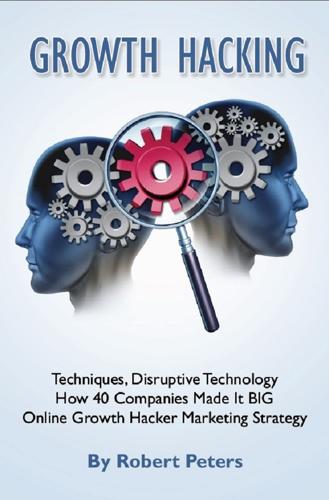
Growth Hacking Techniques, Disruptive Technology - How 40 Companies Made It BIG – Online Growth Hacker Marketing Strategy
by
Robert Peters
Published 18 May 2014
This points to the truism that growth hacking strategies don’t have to last forever. A questionable strategy like the one used by LinkedIn can be effective in the short term so that when the company is “caught” and compelled to shift gears, the existing benefits outweigh any negatives of the forced course correction. Uber Uber was founded in 2009 as “Ubercab,” and launched in June 2010. The service connects passengers with vehicles for hire. Users make reservations via the Uber mobile app. The cost is similar to that of metered taxis, but all money exchanged is handled by Uber, not the drivers. Like the digital loyalty platform Belly, Uber focused intensely on one launch city at a time, starting in San Francisco where early growth was fueled primarily by word of mouth.

Age of Context: Mobile, Sensors, Data and the Future of Privacy
by
Robert Scoble
and
Shel Israel
Published 4 Sep 2013
“Today, this may feel a little bizarre,” Andreessen says, “but 20 years from now it will be bizarre if you walk into a store and the store doesn’t know who you are.” At the rate of current change, we think 20 years may be a bit conservative. Uber Experience Uber was originally called UberCab, except that the startup kept getting cease-and-desist orders from municipalities for operating without taxi licenses. Uber, as it is now called, is a location-based transportation service that will pick you up anywhere in most major North American urban areas as well as a growing number of the world’s major cities, usually in less than 10 minutes of your text message.

Palo Alto: A History of California, Capitalism, and the World
by
Malcolm Harris
Published 14 Feb 2023
Camp couldn’t figure out a good transportation solution for hitting the town in San Francisco, for example, and after paying $800 for a black car on New Year’s Eve, he figured there had to be a better way.vi The original plan for UberCab was for an elite members-only service leveraging the GPS-enabled smartphones that affluent consumers started to carry around, allowing them to summon an UberCab on demand. “Faster and cheaper than a limo, but nicer and safer than a taxicab” was the pitch, and the membership model and high price ensured a “respectable clientele.”9 Camp bootstrapped the earliest work and talked Kalanick into joining.
…
Rebecca Parr, “Vice President Joe Biden Visits Biotech Firm Theranos’s Newark Production Facility,” Mercury News, July 23, 2015. 8. Erin Griffith and Erin Woo, “Elizabeth Holmes Found Guilty of Four Charges of Fraud,” New York Times, January 3, 2022. 9. Johana Bhuiyan, “Take a Look at Uber’s First Pitch Deck from 2008,” Vox, August 23, 2017, https://www.vox.com/2017/8/23/16189048/uber-pitchdeck-2008-ubercab-travis-kalanick-founder-start-up. 10. Scott Austin, Stephanie Stamm, and Rolfe Winkler, “Uber Jackpot: Inside One of the Greatest Startup Investments of All Time,” Wall Street Journal, May 10, 2019. 11. Janko Roettgers, “Whatever Happened to Red Swoosh?” GigaOm, May 3, 2008; David Meyer, “eBay Sells StumbleUpon back to founders,” ZDNet, April 14, 2009. 12.
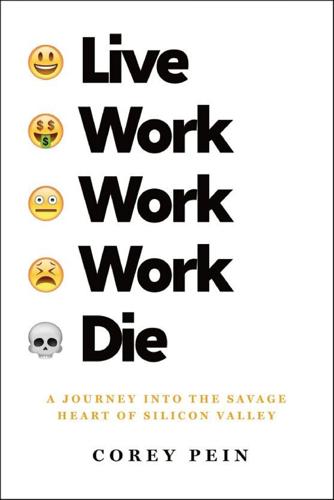
Live Work Work Work Die: A Journey Into the Savage Heart of Silicon Valley
by
Corey Pein
Published 23 Apr 2018
Uber, the unlicensed taxi service launched in 2010, proved once and for all that a few people really can change the world using nothing more than powerful connections, billions of dollars in capital, and a willingness to trample long-standing norms such as the nigh-universal requirement for taxi companies to obtain operating permits and insurance and to certify their drivers for the sake of public safety. In the early days, the company operated under the name UberCab, promoting itself as a “one-click” service to hire “licensed, professional drivers”—a misleading claim, as the company itself was unlicensed and recruited anyone who happened to own a car. By classifying its drivers as “independent contractors” rather than employees, the company shrugged off the burden of minimum wage laws, payroll taxes, health insurance, and other obligations.

Ask Your Developer: How to Harness the Power of Software Developers and Win in the 21st Century
by
Jeff Lawson
Published 12 Jan 2021
If you repeat this process long enough, you’ll systematically build a stronger and stronger organization. I used a technical example, because the practice of blameless postmortems is more common in technical organizations. However, I’ve seen this method applied to every part of our business and it works the same way. In 2010, a fledgling ten-person startup called Uber (actually UberCab at the time) became a Twilio customer. Over the years, they experienced meteoric growth and by the time we went public in 2016 they represented more than 10 percent of our revenue and were a prominent part of our IPO road show. Throughout 2016, they continued to grow at a meteoric pace, reaching nearly $60 million of annualized spend, which was in retrospect unsustainable, especially as they started focusing their attention on cost savings instead of “growth at all costs.”

A Hacker's Mind: How the Powerful Bend Society's Rules, and How to Bend Them Back
by
Bruce Schneier
Published 7 Feb 2023
HACKING AND POWER 121“power interprets regulation as damage”: Julie Cohen and Chris Bavitz (21 Nov 2019), “Between truth and power: The legal constructions of informational capitalism,” Berkman Klein Center for Internet and Society at Harvard University, https://cyber.harvard.edu/sites/default/files/2019-12/2019_11_21_Berkman_Julie_Cohen_NS.pdf. 30. UNDERMINING REGULATIONS 123Uber is a taxi service: The company was initially named UberCab but changed it for precisely this reason. 123a hack of the taxi industry: Ruth Berens Collier, Veena Dubal, and Christopher Carter (Mar 2017), “The regulation of labor platforms: The politics of the Uber economy,” University of California Berkeley, https://brie.berkeley.edu/sites/default/files/reg-of-labor-platforms.pdf. 123Uber has since leveraged: Uber Technologies, Inc. (2021), “2021 Form 10-K Annual Report,” US Securities and Exchange Commission, https://www.sec.gov/ix?
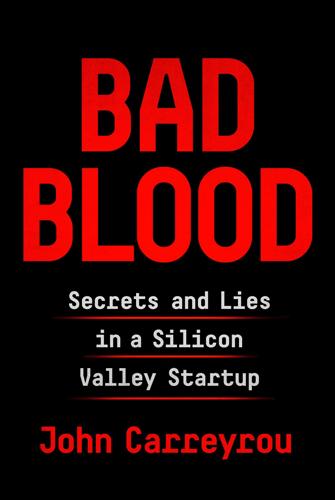
Bad Blood: Secrets and Lies in a Silicon Valley Startup
by
John Carreyrou
Published 20 May 2018
Meanwhile, the iPhone and competing smartphones featuring Google’s Android operating system were beginning to usher in a shift to mobile computing, as cellular networks became faster and capable of handling larger amounts of data. Wildly popular mobile games like Angry Birds, which millions of iPhone users were paying a dollar each to download, seeded the notion that you could build a business around a smartphone app. In the spring of 2010, an obscure startup called UberCab did a beta launch of its black car hailing service in San Francisco. All of this might not have been enough to ignite the new boom, however, if it hadn’t been for another key ingredient: rock-bottom interest rates. To rescue the economy, the Federal Reserve had slashed rates to close to zero, making traditional investments like bonds unattractive and sending investors searching for higher returns elsewhere.
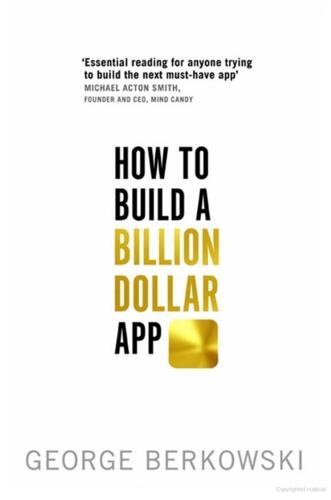
How to Build a Billion Dollar App: Discover the Secrets of the Most Successful Entrepreneurs of Our Time
by
George Berkowski
Published 3 Sep 2014
Launching with a ‘national’ domain (such as .co.uk or .fr) is fine if you have small ambitions but won’t cut it if you’re serious about billion-dollar status. • Get as close as you can to the pure version of your domain. Starting with variants is perfectly fine: Twitter operated on twittr.com for many years before having the money to purchase twitter.com; similarly Facebook was thefacebook.com for many years; and Uber had ubercab.com before it acquired the sleek uber.com domain. • Starting out with a domain name like ‘[companyname]app.com’ is great strategy if you’re focused just on the mobile side of things. • Other alternatives such as ‘get[companyname].com’ and ‘get[companyname]app.com’ are also good ideas to get the ball rolling (ideally, you’ll be able to purchase a cleaner version down the line)

WTF?: What's the Future and Why It's Up to Us
by
Tim O'Reilly
Published 9 Oct 2017
The incentives of passengers and drivers were aligned, drawing both into what would become a thriving marketplace. The taxicab companies recognized relatively early on that the new app made limousines more competitive with taxis, and claimed that Uber was an unlicensed cab company. The company’s initial name, UberCab, gave fuel to the argument. But with the small concession of dropping “Cab” from the name (something they’d wanted to do anyway), Uber was able to convince regulators that they should still be covered by the rules of the limousine market rather than by those of taxicabs. Once Uber added peer-to-peer service, it was game over for the taxicab industry, hobbled by its existing regulatory model, which controlled both the fares that could be charged and the number of people who could provide the service.